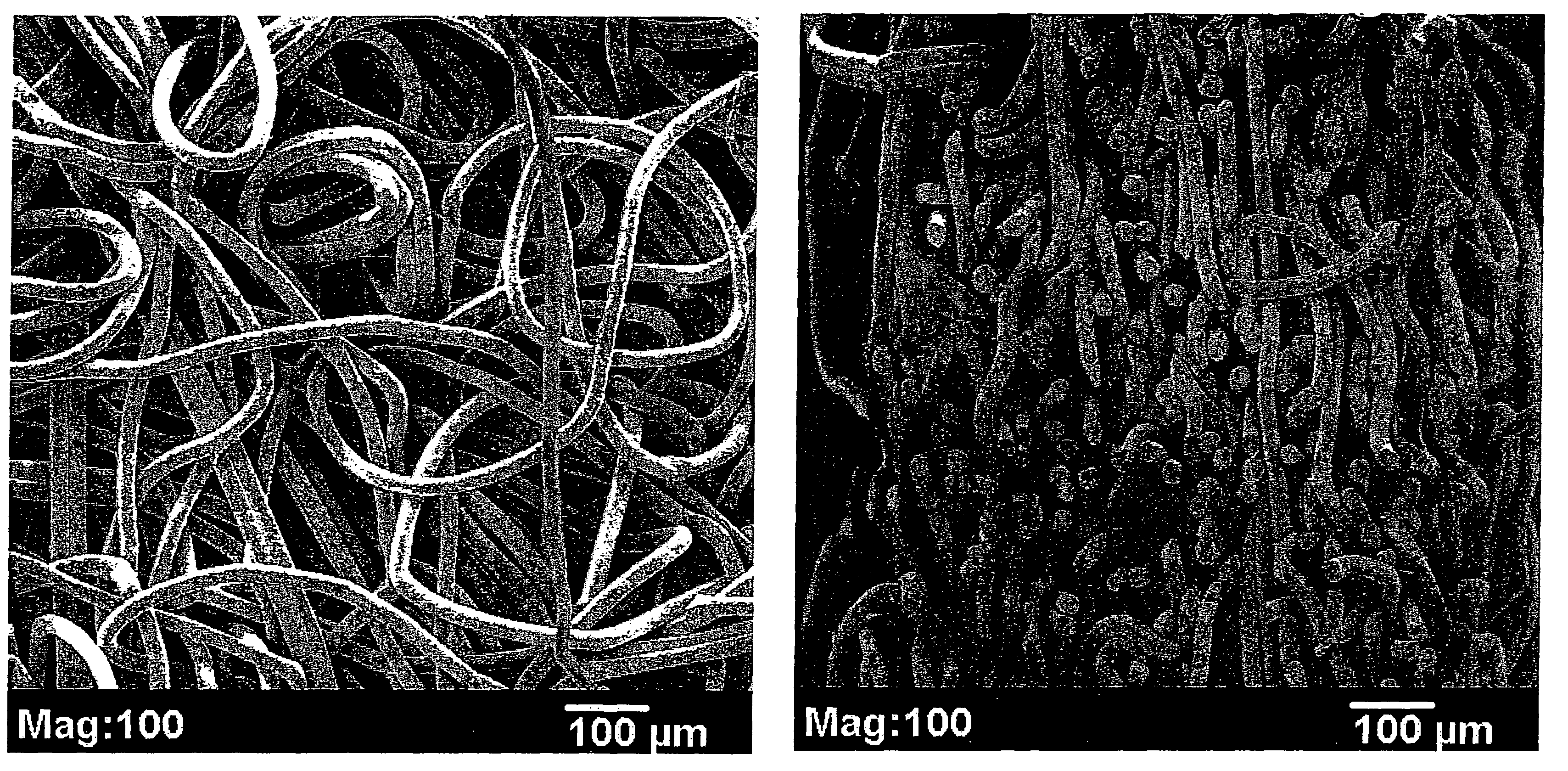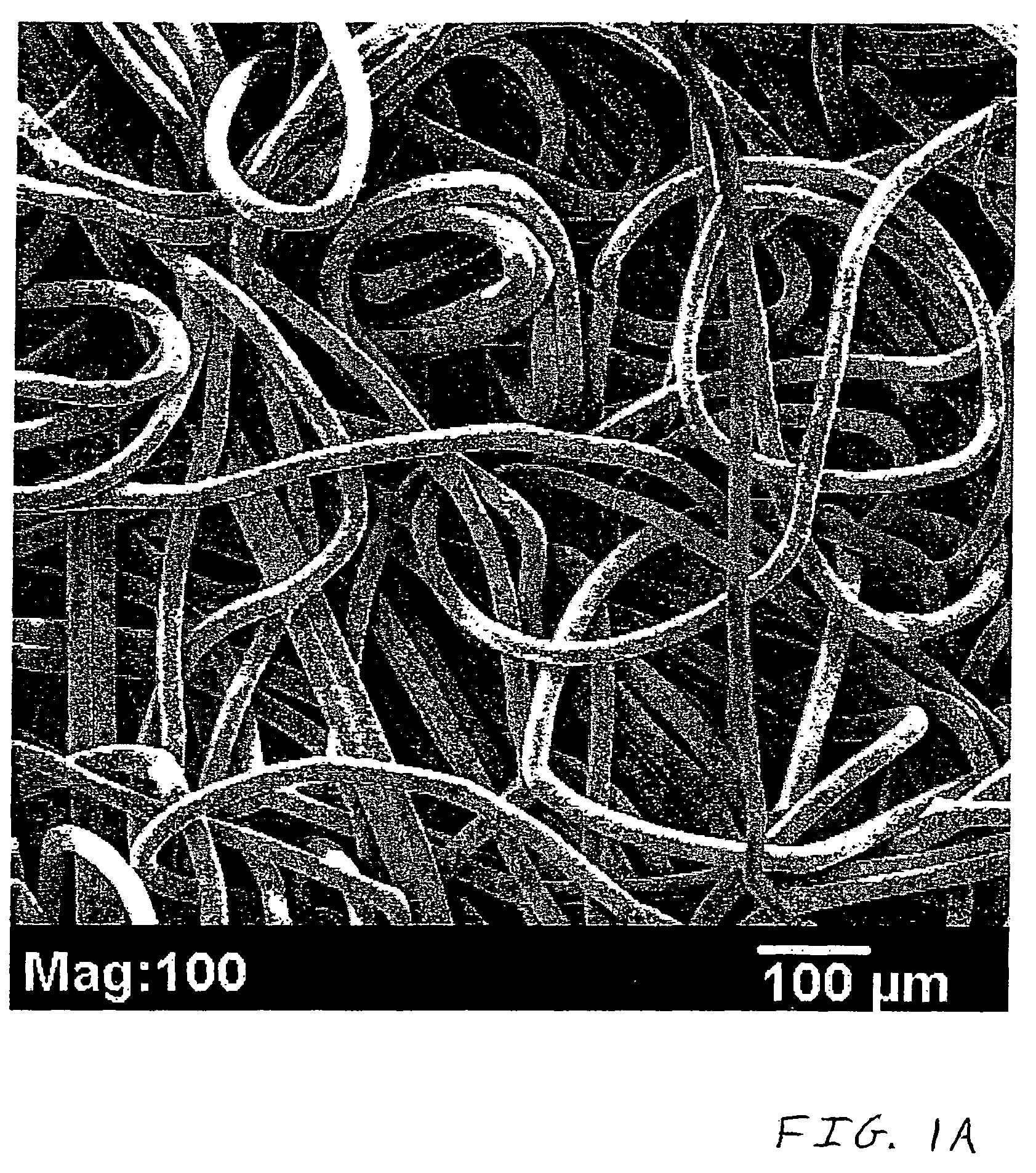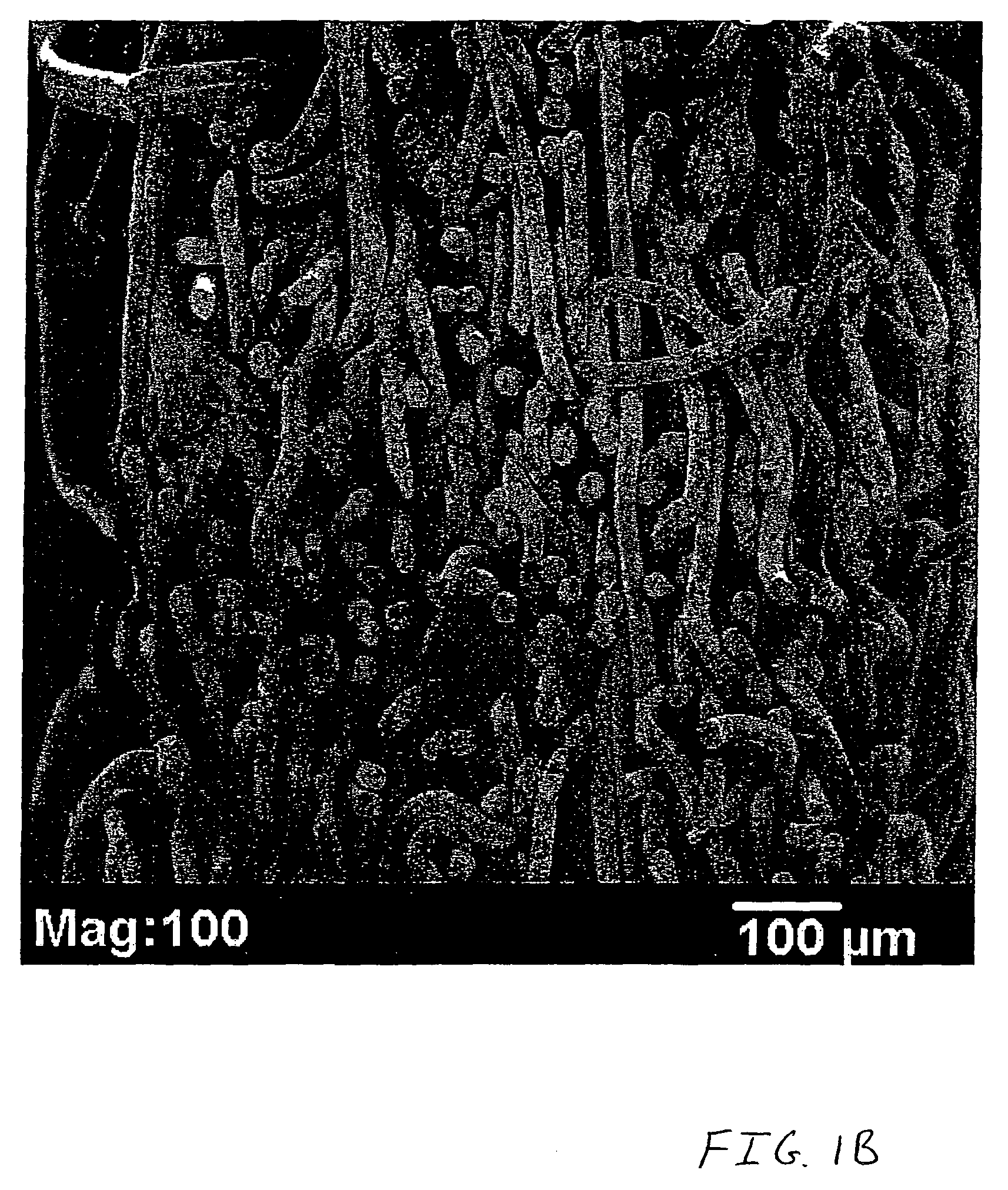Nonwoven tissue scaffold
a tissue scaffold and non-woven technology, applied in the field of tissue repair scaffold devices, can solve the problems of degenerative arthritis, debilitating conditions, and the gradual development of tears with age, and achieve the effect of stimulating cell growth
- Summary
- Abstract
- Description
- Claims
- Application Information
AI Technical Summary
Benefits of technology
Problems solved by technology
Method used
Image
Examples
example 1
[0085]Scaffolds made according to the present invention, as described below, were investigated and compared with conventional implants during a series of suture retention and stiffness tests. In series one, 3-0 polypropylene sutures with taper needles (Ethicon, 8665H) were placed in 5 mm×11 mm rectangles of scaffold. As shown in FIG. 4, suture 20 was given a 1.5 mm Bite-Distance 22 and a clamp 24 was positioned along the bottom portion. Half of the scaffold rectangles were mechanically tested immediately, while the remaining half were placed in DPBS (Gibco, cat# 34190-136) and incubated at 37° C. for 2 weeks before testing.
[0086]In series two and three, 2-0 Ethibond sutures were placed in the 7 mm×11 mm rectangles of scaffold shown in FIG. 5. In an experimental setup similar to series one, suture 20 was positioned with a 1.5 mm Bite-Distance and clamp 24 was positioned along the bottom portion of the scaffolds. Again, half the scaffold rectangles were mechanically tested immediately...
example 2
[0095]The tensile strength properties of the scaffold of the present invention were investigated and compared with conventional meniscal implant devices. Nonwoven scaffolds of various densities, with and without a foam component, were constructed from PDS and PDS / VICRYL fibers. A conventional PDS mesh reinforced with foam was used for comparison. The experiments were performed in accordance with the standards of the American Society for Testing and Materials (D638-02, Test Method for Tensile Properties of Plastics and D1708-02a, Standard Test Method for Tensile Properties of Plastics By Use of Microtensile Specimens).
[0096]The samples were prepared in the shape of a dogbone by die cutting sheets of material. The resulting samples had 5 mm widths and various thicknesses. The samples were placed in an INSTRON (Model 4210) to provide a constant rate of crosshead-movement. A video extensometer was used to measure the distance between two points on the specimen as it was stretched.
[0097]...
example 3
[0101]The tensile strength properties of the scaffold of the present invention were investigated for scaffolds of varying thickness and material composition. The first and second scaffold were constructed with a 50 / 50 mixture of PDS and VICRYL and had a thickness of 1 mm and 0.5 mm, respectively. The third scaffold was constructed from a 40 / 60 mixture of PDS and VICRYL and had a thickness of 0.7 mm. The nonwoven scaffolds all had a density of 240 mg / cc and did not include a foam component. The experiments were performed in accordance with the standards of the American Society for Testing and Materials (D638-02, Test Method for Tensile Properties of Plastics and D1708-02a, Standard Test Method for Tensile Properties of Plastics By Use of Microtensile Specimens).
[0102]As in Example 2, the samples were prepared in the shape of a dogbone by die cutting sheets of material. The resulting samples had 5 mm widths and various thicknesses. The samples were placed in an INSTRON (Model 4210) to...
PUM
 Login to View More
Login to View More Abstract
Description
Claims
Application Information
 Login to View More
Login to View More - R&D Engineer
- R&D Manager
- IP Professional
- Industry Leading Data Capabilities
- Powerful AI technology
- Patent DNA Extraction
Browse by: Latest US Patents, China's latest patents, Technical Efficacy Thesaurus, Application Domain, Technology Topic, Popular Technical Reports.
© 2024 PatSnap. All rights reserved.Legal|Privacy policy|Modern Slavery Act Transparency Statement|Sitemap|About US| Contact US: help@patsnap.com










